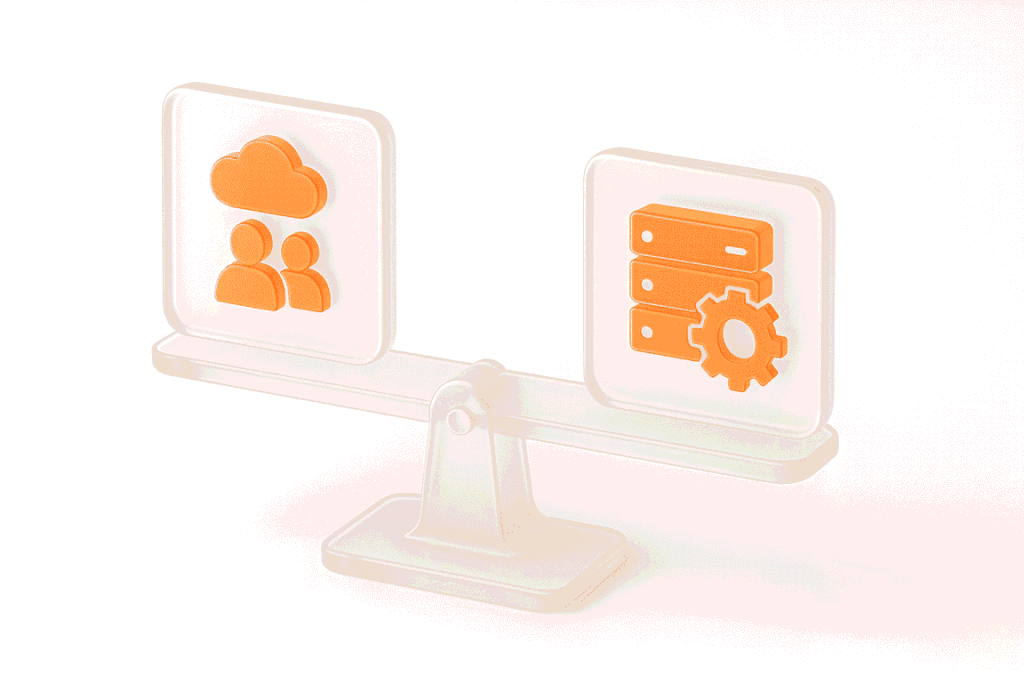Gatling Cloud, a cloud-based extension of the open-source performance testing tool, is a powerful load testing solution with its benefits. Those include excellent scalability, no-code test builder, moderate price for virtual user hours (VUh), and numerous useful integrations. However, with its steep learning curve due to reliance on Scala/Java and setup (and overall) complexity, it may not be a perfect fit for time-critical projects.
In this material, we compiled some effective solutions that can work as alternatives to Gatling. Let us take a closer look and highlight the main features.
Key Takeaways
1. PFLB
PFLB comes to mind first as it supports JMeter, the best open-source Gatling alternative. It is an AI-powered, cloud-based performance testing tool designed for both experienced and novice users, including developers, performance engineers, marketers, and project managers. It is scalable, flexible, and intuitive and enables distributed load testing without requiring complex infrastructure.
Key Features
Unique Advantages
Comparison with Gatling
Among other Gatling alternatives PFLB features a quicker setup due to a user-friendly no-code interface. The VUh priсe is slightly higher, but the AI-powered features save hours of work for the team, while traffic cloning provides accurate insights.
Key Takeaways
PFLB is ideal for teams seeking fast, scalable, and user-friendly performance testing, especially for web applications and APIs. Its AI-driven features and cloud-first architecture enhance efficiency. If you’re exploring the broader landscape of API load testing tools, this comprehensive guide details the top 10 options—covering capabilities, pricing, and integrations to help you choose the best fit for your project’s demands.
2. LoadNinja
LoadNinja is a cloud-based platform for browser-based performance testing of websites and web applications. Instead of load emulators, it uses real browsers, offering accurate, actionable metrics to measure application performance. With AI-driven features, it makes load testing simpler by handling dynamic values like session IDs and tokens automatically.
Key Features
Unique Advantages
Comparison with Gatling
LoadNinja automates dynamic value management, unlike Gatling, which requires manual scripting. However, Gatling supports private clouds and production traffic analysis, areas where LoadNinja has limitations.
Key Takeaways
LoadNinja has a slightly alternative technology: it uses browser based testing instead of protocol-based — like Gatling. Its reliance on AJAX and lack of private cloud support or production traffic analysis may not meet every need.
3. Apache JMeter
The benchmark of the industry and an open-source performance testing tool designed for comprehensive web application performance testing. In contrast to other Gatling alternatives, Apache JMeter is for those, who do not need cloud capabilities. It is the most popular testing tool, and the community around it is very large, so one can rely on it while solving complex issues.
It supports a wide range of protocols, making it highly versatile for evaluating server-side performance. Written in Java, JMeter is free and accessible for businesses of all sizes. You can also find out more about JMeter vs LoadRunner.
Key Features
Unique Advantages
Comparison with Gatling
JMeter offers broader protocol support, making it ideal for enterprise-level testing. However, its legacy GUI and complexity in handling dynamic applications make it less user-friendly compared to Gatling’s modern interface. For teams evaluating these tools, a detailed Gatling vs. JMeter comparison can help determine which solution better aligns with your specific testing requirements.
Key Takeaways
JMeter is a versatile, free solution for protocol-level testing, suited for both large-scale and functional testing. Its open-source nature and broad integrations make it adaptable, but its legacy design and infrastructure setup requirements may pose challenges for users seeking modern, cloud-based alternatives.
4. Locust
Locust is an open-source, Python-based load testing tool that simplifies creating and executing performance tests. This one of the Gatling alternatives allows testers to define user behavior with Python code, making it intuitive for engineers familiar with programming. Locust’s cloud-based solution, Locust.cloud, offers hosted load generators and a web UI for managing tests.
Key Features
Unique Advantages
Comparison with Gatling
Locust offers a simpler scripting experience using Python, while Gatling uses Scala, which may be less familiar to some testers. Locust’s real-time web UI is more user-friendly for test monitoring, whereas Gatling focuses on developer-centric integrations. Gatling has stronger built-in reporting and script recording capabilities, which Locust lacks.
Key Takeaways
Locust is an accessible, scalable tool suitable for testers at any experience level, thanks to its Python-based scripting and distributed testing features. While Locust.cloud enhances functionality with hosted generators and dashboards, the lack of a free tier, private cloud support, and built-in script recording may limit its appeal for some users. Take a closer look at Load Testing using Locust.
5. LoadRunner (for those who don’t care about pricing)
LoadRunner is a robust performance testing tool ideal for complex enterprise applications, legacy systems, and ERP software. It enables the emulation of thousands of users to simulate real-world application loads and ensure readiness for live environments. Among all the other Gatling competitors, this one is the most expensive. If budget constraints are a concern, exploring LoadRunner performance testing alternatives might help you find a more cost-effective solution.
Key Features
Unique Advantages
Comparison with Gatling
LoadRunner offers extensive protocol support and advanced integrations, making it ideal for enterprise-scale applications. In contrast, Gatling is lightweight and script-based, better suited for agile teams needing quick test setups. LoadRunner’s predictive analytics and diagnostic tools surpass Gatling’s capabilities but come at a higher cost and complexity.
Key Takeaways
LoadRunner is a premium performance testing tool designed for large-scale, complex applications. Its rich protocol support, advanced debugging, and integration capabilities make it an enterprise favorite: Take a look at SAP load testing using LoadRunner. However, the high cost and licensing constraints make it not the perfect choice for SMEs.
6. Artillery
Artillery is an open-source tool for simulating virtual user traffic and browser-based load testing with Playwright scripts. Tests are defined using simple YAML files and executed via the command line. Artillery Cloud provides dashboards and analytics for easier performance data interpretation.
Key Features
Unique Advantages
Comparison with Gatling
Artillery is simpler to configure with YAML files and excels in browser-based testing. It supports private clouds, unlike Gatling, but lacks hosted load generators and bottleneck analysis tools. Gatling offers better integration with APM tools.
Key Takeaways
Artillery is a flexible, user-friendly tool for browser and protocol testing, with strong cloud features. However, it relies on CLI and lacks and cannot identify bottlenecks.
7. Neoload

NeoLoad is a performance testing and monitoring tool designed for enterprise-level applications. It supports load and stress testing for APIs, web, and mobile applications. Known for its ease of use and robust integrations, NeoLoad simplifies creating and executing tests through graphical workflows and automated processes.
Key Features
Unique Advantages
Comparison with Gatling
NeoLoad is more accessible to non-developers with its graphical interface and automation capabilities, whereas Gatling requires scripting in Scala. NeoLoad excels in enterprise environments with strong legacy system support and advanced analytics. Gatling, in contrast, is better suited for lightweight, developer-centric testing.
Key Takeaways
NeoLoad is a comprehensive performance testing tool ideal for large-scale and complex applications. Its ease of use, strong DevOps integrations, and scalability make it a go-to choice for enterprises. However, its licensing costs and advanced features may be excessive for small teams or simple projects.
8. Grafana Cloud K6
K6 is an open-source tool for developers using JavaScript. It supports load testing of websites, APIs, GraphQL, WebSocket, and more. With Grafana Cloud K6, a commercial extension, it offers cloud-based load generators and allows distributed testing across 21 locations.
Key Features
Unique Advantages
Comparison with Gatling
K6 is designed for developers who use JavaScript for scripting and integrating well with Grafana. It offers better monitoring tools and cloud scalability than Gatling. However, Gatling is easier for non-developers to use, with a simpler interface and support for Scala scripting, while K6 requires more technical skills.
Key Takeaways
K6 is a robust and scalable performance testing solution, ideal for engineering teams seeking automation, detailed insights, and Grafana integration. While its developer focus and minimal resource use are strengths, its complexity and reliance on JavaScript may pose challenges for non-developer audiences.
Conclusion
The market for performance testing tools offers varied alternatives to Gatling. The closest one is JMeter, but it does not have native cloud capabilities. In this case, PFLB stands out as a strong second, offering a cloud-native architecture that enables seamless execution of JMeter tests in the cloud, along with AI-driven insights, gRPC stress testing, and user-friendly features. The ultimate decision, however, hinges on your team’s technical proficiency, the complexity of your project, and the demands of your infrastructure.





